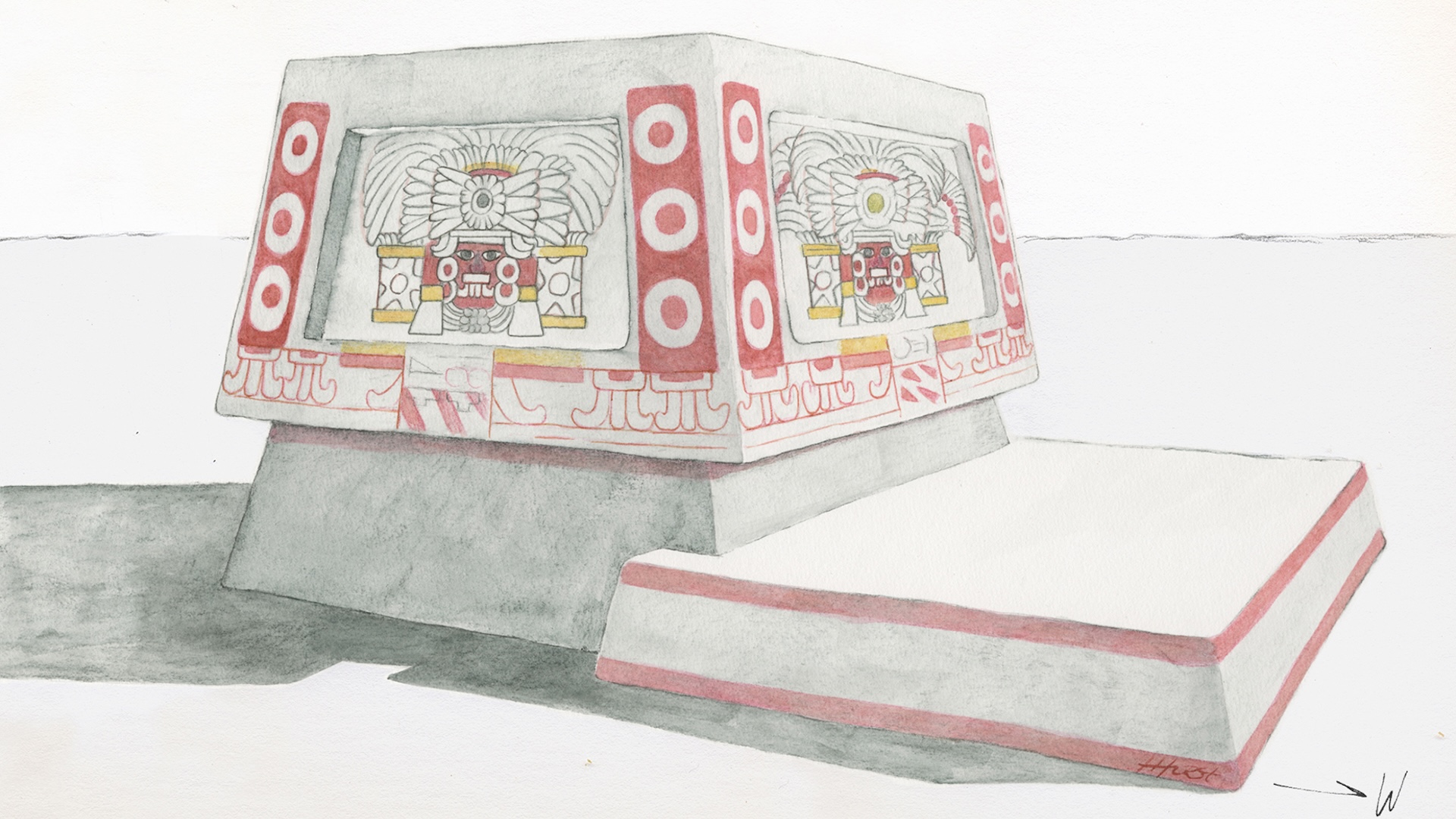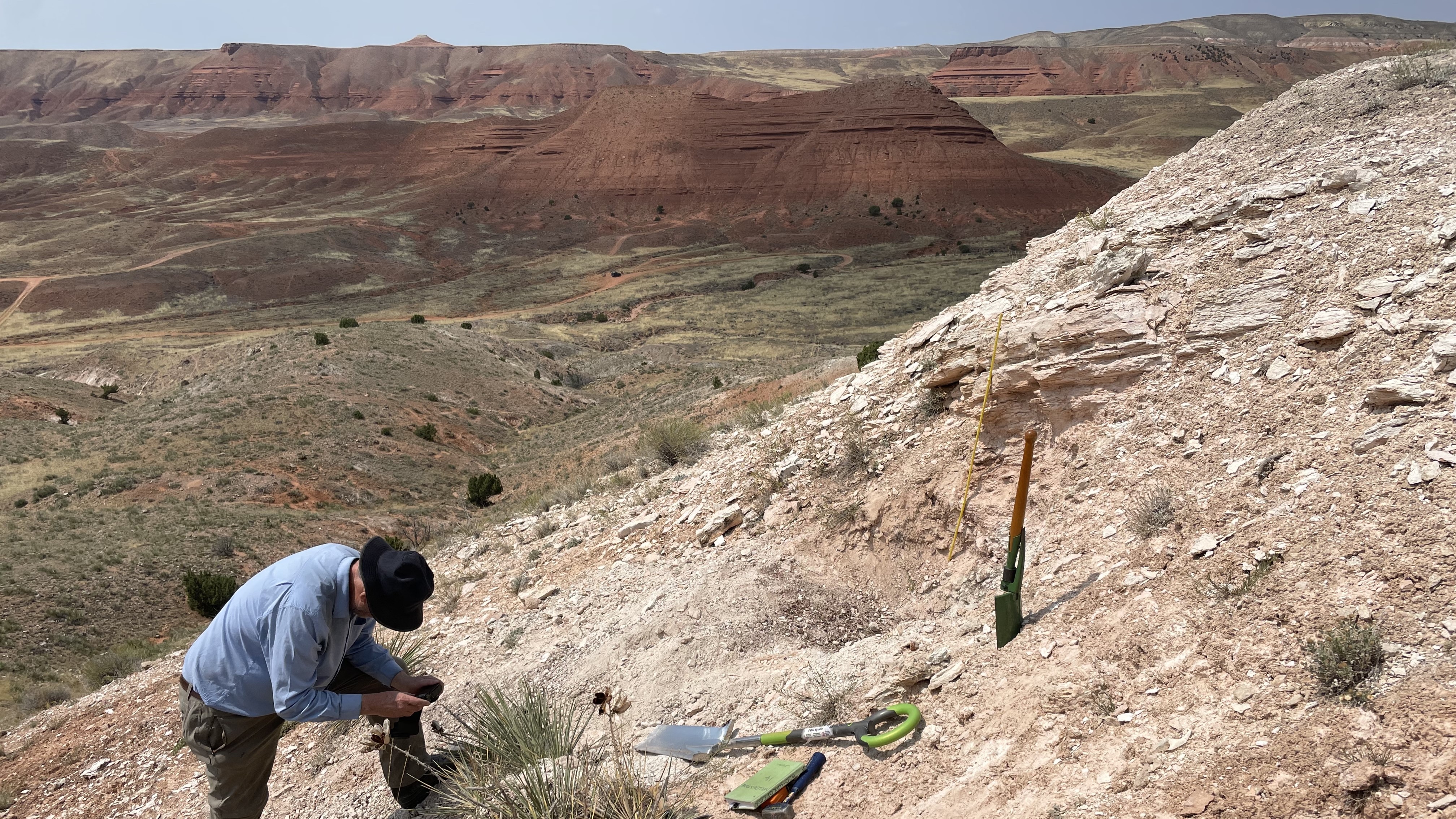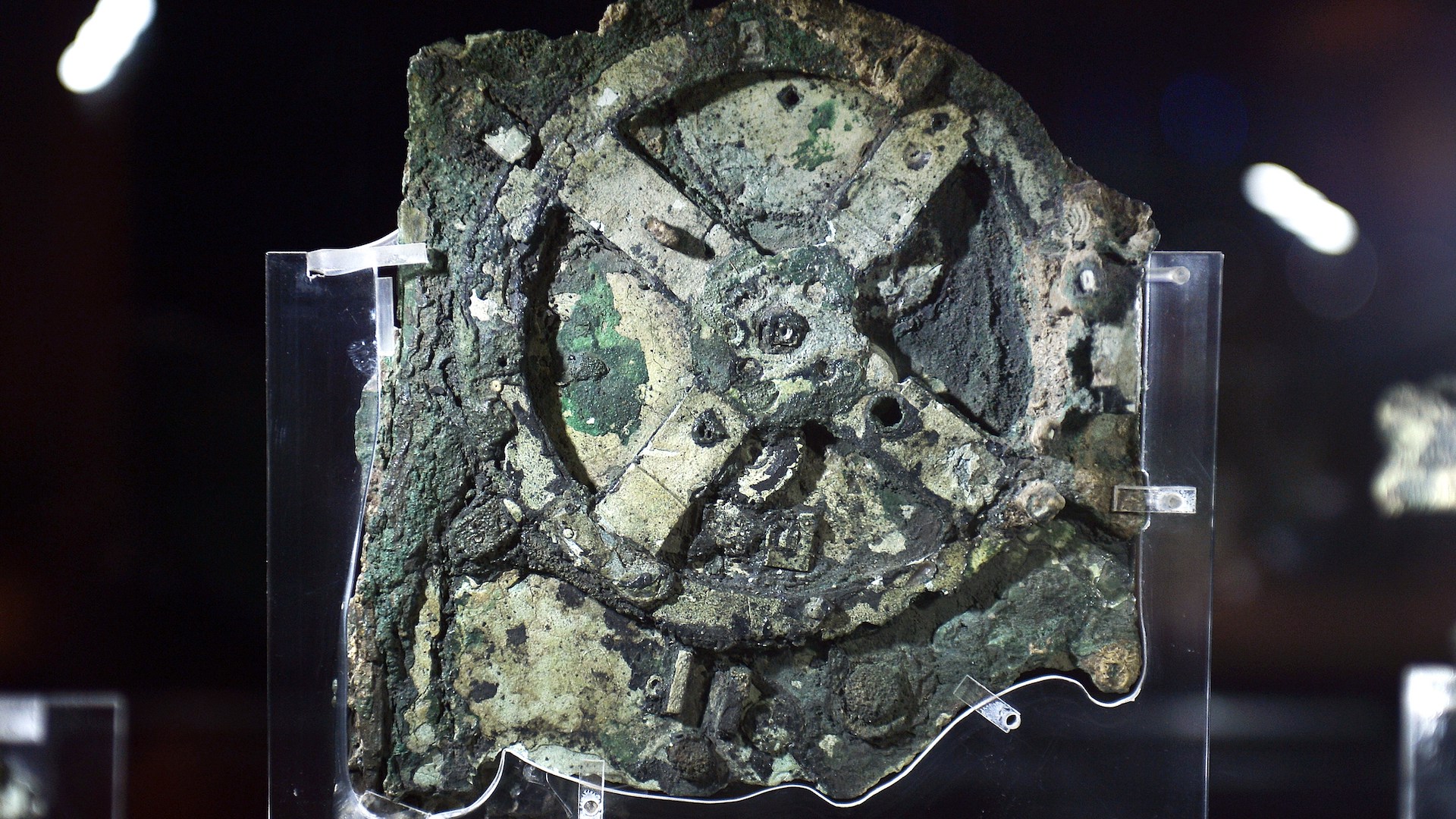The World's Oldest Known Drawing Is a 73,000-Year-Old Hashtag

A small rock flake no larger than a house key is covered with a colossal surprise: the first known drawing ever made by a human.
Some human or humans (Homo sapiens) used a red-ochre crayon to draw a hashtag-like design on a rock flake in what is now South Africa about 73,000 years ago, said the researchers who analyzed the doodle.
It's unclear what the crisscrossed lines mean, but similar designs have been found at other early human sites in South Africa, Australia and France, said study senior researcher Christopher Henshilwood, director of the Centre for Early Sapiens Behaviour at the University of Bergen in Norway. [See Photos of the Ancient Drawing]
"It seems to be part of the human repertoire of producing signs," Henshilwood told Live Science.
Archaeologists discovered the 1.5-inch-long (3.8 centimeters) rock flake in Blombos Cave, an archaeological site on the coast of South Africa, about 185 miles (300 kilometers) east of Cape Town. The cave is famous for its Middle Stone Age artifacts — including shell beads and engraved stone tools — that were left by humans who lived there between 100,000 and 70,000 years ago.
Study co-researcher Luca Pollarolo, a technical assistant in anthropology and African archaeology at the University of Geneva in Switzerland, made the actual discovery in 2015, when he was going through sediment samples in the lab, which excavators had painstakingly "removed millimeter by millimeter" from the cave, Henshilwood said.
The flake was covered with ash and dirt, but a quick wash revealed the red crosshatch lines, Henshilwood noted. The ancient drawing includes six parallel lines that are crossed by three slightly curved lines, the researchers said. (Go here to see a 3D video of the ancient drawing.)
Sign up for the Live Science daily newsletter now
Get the world’s most fascinating discoveries delivered straight to your inbox.
In other words, the piece of abstract art "is a hashtag," said Henshilwood, who added that the drawing predates other known early human drawings by at least 30,000 years.
Is it real?
As any skeptic would, the researchers wondered whether the drawing was made naturally or if it was created by H. sapiens. So, they reached out to study co-researcher Francesco d'Errico, a professor at the University of Bordeaux, who helped them photograph the artifact and determine that the lines had been applied to the rock by hand.
The research team members even tried making their own designs with ochre on similar pieces of stone. The original artist (or artists) first smoothed the stone and then used an ochre crayon that had a tip between 0.03 to 0.1 inches (1 to 3 millimeters) thick, they found. (Ochre is a clay that can vary in hardness and can leave behind a mark similar to a crayon's.)
Moreover, the sudden termination of the red lines suggests that the pattern originally covered a larger surface. For this reason, the researchers suspect the flake was once part of a larger grindstone, Henshilwood said. Archaeologists are currently searching for more pieces of the grindstone, but they haven't found anything yet, he said. [Gallery: Europe's Oldest Rock Art]
The people who drew the hashtag were hunter-gatherers who excelled at catching big game, including hippos, elephants and 60-lb. (27 kilograms) fish, Henshilwood said. Given their proficient hunting skills, "they probably had a lot of free time to sit around the fire and talk and make things like jewelry," he said.
However, art isn't exactly new to early humans. The oldest known engraving, for instance, is another piece of abstract art: a zigzag line that Homo erectus carved onto a shell 540,000 years ago in Indonesia, Live Science previously reported.
The discovery of the ochre drawing is exceptional but not unexpected, said Emmanuelle Honoré, a fellow at the McDonald Institute for Archaeological Research at the University of Cambridge in England, who wasn't involved with the study. That's because, in addition to other discoveries of early art, such as the carved shell, the study's authors published a study in 2001 about a bone fragment from Blombos Cave that has "comparable engraved lines in the same archaeological level," she said.
The design on the bone fragment, as well as the newly analyzed ochre drawing, provides insight into our ancestors' abilities to create abstract art and signs, she said.
"It contributes to evidence of the development of what we can call the 'early symbolic behavior' or more largely the 'symbolic mind' of our species, Homo sapiens," Honoré told Live Science in an email. "It also shows how fast prehistoric studies are evolving: 50 years ago, we would never have suspected such a degree of intellectual refinement for such ancient ('primitive' was the term rather used at that time) societies."
The study was published online today (Sept. 12) in the journal Nature.
Original article on Live Science.

Laura is the archaeology and Life's Little Mysteries editor at Live Science. She also reports on general science, including paleontology. Her work has appeared in The New York Times, Scholastic, Popular Science and Spectrum, a site on autism research. She has won multiple awards from the Society of Professional Journalists and the Washington Newspaper Publishers Association for her reporting at a weekly newspaper near Seattle. Laura holds a bachelor's degree in English literature and psychology from Washington University in St. Louis and a master's degree in science writing from NYU.









